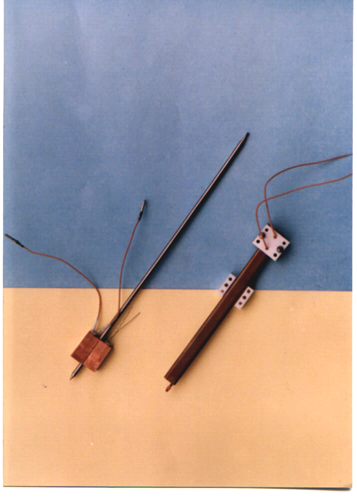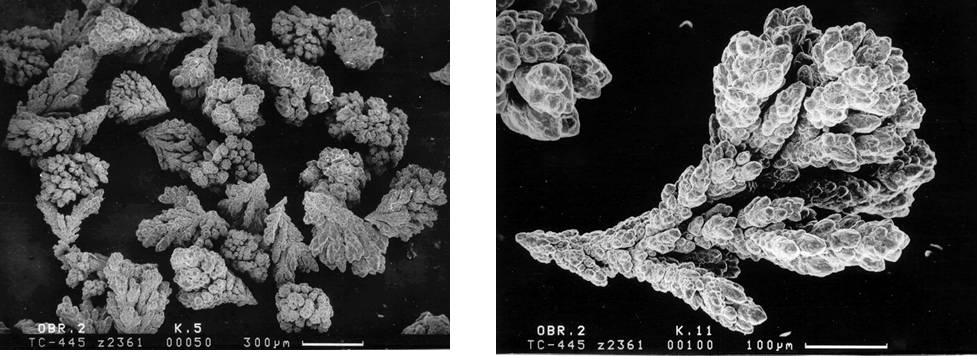|
(MHP) are one of the promising technologies for the achievement of high local heat removal rate and uniform temperatures in electronic devices. In recent years taking into consideration modern tendency of miniaturization of the devices heat fluxes dissipated by the components of electronic devices are being attempted 100–1000 W/cm2. In this situation micro and miniature heat pipes are one of the most advantageous ways of the providing of needed thermal conditions of electronic components. Miniature heat pipes have a very high coefficient of thermal conductivity owing to the great latent heat of evaporation of working fluid and low thermal resistance. They may be used as efficient heat spreaders to eliminate hot spots and to decrease temperature gradients of electronic components. Besides electronic cooling micro and miniature heat pipes are interesting to be used in implanted neural stimulators, sensors and pumps, electronic wrist watches, active transponders, self-powered temperature displays, temperature warning systems, they are promising to cool and heat some biological micro objects. Micro and miniature heat pipes are used to eliminate hot spots and to reduce temperature gradients of electronic components.
MHPs have cylindrical, flattened or flat shape. Flat heat pipes are successfully applied for example for the cooling of semiconductor elements. The flat heat pipe can be installed on a semiconductor element or a semiconductor substrate with the flat surface of the heat pipe parallel to the substrate. Modern flat and cylindrical miniature heat pipes are used now to cool millions of notebook computers and processors in desktop PCs.
Hydraulic diameter of microchannels for fluid flow is about 10–500 μm in micro heat pipes and 2–4 mm in miniature heat pipes. Smaller channels application is desirable because of two reasons: higher heat transfer coefficient, and higher heat transfer surface area per unit flow volume.
There is a strong interaction between basic phenomena in heat pipes. Basic equations are related to vapour flow in the MHP channel, liquid flow in the capillary structure, interface position between the vapour and liquid (mechanical equilibrium yields interface curvature), radial heat transfer, vapour flow limit, capillary limit. Feedbacks may cause instabilities, waves, flooding, and performance jump. Optimisation of the new copper sintered powder wick in MHPs with outer diameter 3–4 mm and length up to 200 mm was carried out in the A.V. Luikov Heat & Mass Transfer Institute since 1997. The maximum heat transfer rate for these HPs is up to 100 W. Original software was developed and used for prediction of cylindrical and flattened heat pipes characteristics.

Cylindrical and flattened miniature heat pipes with heaters
HP characteristics
- Thickness/diameter 2..6 mm,
- Length 100..300 mm,
- Temperature range 20..100 °C,
- Maximum heat load 100 W,
- Thermal resistance up to 0.2 K/W,
- Tilt angle –90°.. +90°,
- Material copper, stainless steel,
- Working fluid water, methanol, propane,
- Wick sintered powders, grooves, screen mesh

MHPs require an effective wick. Sintered powder metal wicks offer several advantages over other wick structures. An emerging advantage of the sintered powder wick is its ability to handle high heat fluxes with usually low thermal resistance. Since sintered powder wicks are generaly more then 60 % porous, there is accordingly a large surface area for evaporation. Another advantage of a heat pipe with a sintered powder wick especially for the cooling system of mobile PC platform is that it can work in any orientation, including against gravity (evaporation zone is above condensation one).
Sintered copper powder with rounded shape and so called dendrite shape is used to increase the wick permeability and to provide a good mechanical contact between internal surface of the heat pipe envelope and wick. Homogenous and non-homogenous capillary structures, bi-porous wicks containing macro and micro pores are also applied. Good mechanical contact as well as the high level of a thermal conductivity also play an important role to minimize the temperature drop in a MHP radial direction.

SEM photo of the copper powder with dendrite shape
|